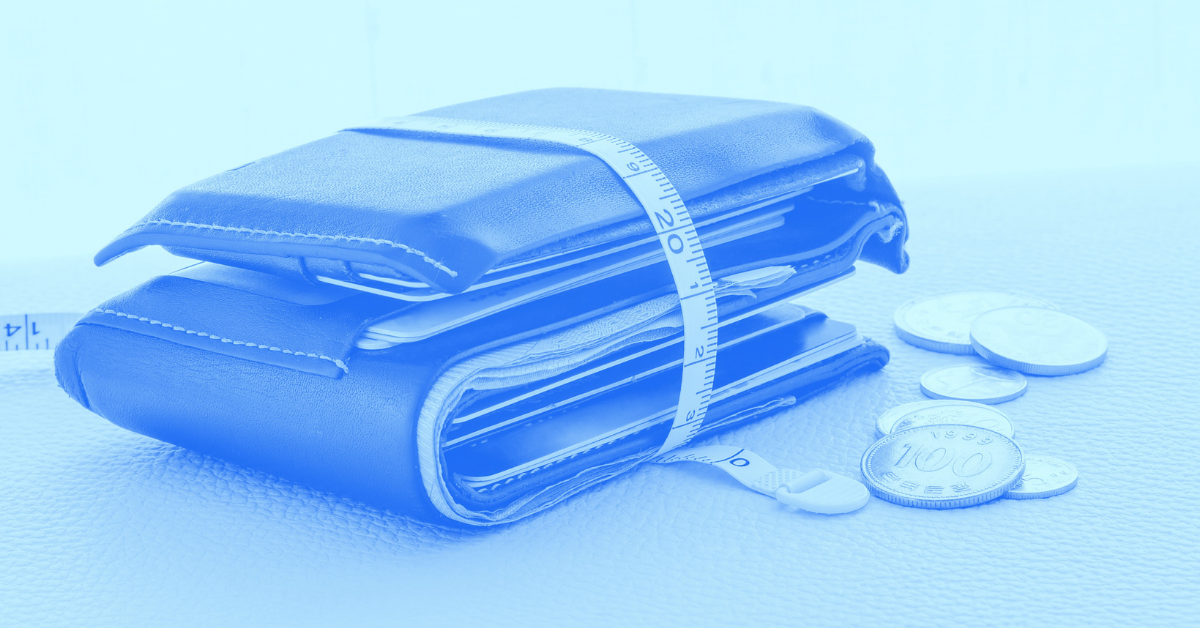Living On A Strict Savings Plan: Tips, Tricks, & Commiseration
Share this

3.5 MIN READ
I have some big things coming up this year, and unfortunately they require a lot of money. The first is a trip out-of-state to a comic convention, complete with four nights in a hotel and three costumes. I’m looking at about $3,000 for this excursion alone. The second is a house I’m having built. My father was kind enough to secure the mortgage (I have no credit history and no money for a down payment), but I’ll be covering the monthly payments. There’s also the part where I have to furnish an entire house and—spoiler alert—I’ve got nothing. For this, I’m trying desperately to save around $5,000.
So, if you’re keeping track, that’s $8,000. Oh, and did I mention I need to have all of this money by August?
Yeah…
After taxes, I pull in around $2,100 a month. Subtract my monthly bills ($500) and the $600 I put into savings for an emergency fund, and I have $1,000 to work with. Seems like this should be no trouble at all, right?
Wrong.
While technically I have $1,000 “leftover,” that’s the money off of which I have to live. That means groceries, gas, unexpected doctor and vet visits, gifts for birthdays, anniversaries, and other various holidays, meals outside the home for special occasions, Marvel movie premieres (can’t miss ‘em), and so on. So far, I’ve only been able to save an extra $400 per month. I know that I need to start pinching pennies, but it’s far easier said than done.
If you’re in a similar situation—that is, wanting to make saving money a priority—but don’t know how to get started, here are a few things you can do to still live your life while meeting your goal.
Talk to Your Friends and Family About Your Goals
It may not be the most comfortable of conversations, but when you start a strict savings plan, you’ll need to discuss it with your friends and family. Explain why you’re saving money, and how you’re going about it. Make it clear that it’s not personal when you turn them down for nights out on the town or spontaneous vacations.
Now this doesn’t mean you have to stop socializing altogether, but it does mean you have to know when to turn people down. You don’t have to say “no” to absolutely everything and you can always offer up a cheaper alternative. But don’t let yourself be guilt-tripped into spending money. Put your foot down when need be; the people who truly care about you will understand.
Track Your Expenses
The first step to saving money is to determine how much you spend every month. By tracking your spending, you can identify and fix problem areas within your budget. Furthermore, it will help you live within (versus above) your means, which ultimately makes saving money much easier.
Though tracking your expenditures—and I mean every single one—may seem like a mind-numbing chore, you’ll find that it’s actually quite useful (if not eye-opening). Use your credit card or bank statements to help you account for every penny. There are apps for pretty much every device that will aid you in tracking your spending. Personally, I use Google Sheets and do it myself.
When you have a decent amount of data, organize expenses by category (e.g. fuel, groceries, mortgage) and total each amount. Once you’ve done this, you’re ready to move onto the next step:
Separate Your Wants From Your Needs
Buying things that aren’t actually needed can become a habit without you even noticing, and if you pay for something long enough, your brain mistakes that want for a need. When you’re living on a strict savings plan, you’ll inevitably need to make some sacrifices; here, understanding the difference between wants and needs becomes essential.
Using the data you gathered when tracking your expenses, make a list of the things that you need versus the things that you want and then consider what you can reduce or eliminate from your budget. For instance, I’m a bit of a makeup enthusiast. I need a new bottle of foundation every few months, but I want a new shade of lipstick every payday. By not purchasing lipstick every two weeks, I can save myself $40 a month. Besides, I have enough freaking lipstick.
Don’t Be Too Hard On Yourself
Speaking of ridiculous expenses, it’s important to set aside a small amount of money to spend frivolously each month. Much like a diet, if you don’t allow yourself something you enjoy every now and again, you’re more likely to relapse and ultimately destroy your savings plan. Just remember to use cash instead of credit for these little indulgences as it will help you from going completely off the rails.Track Your Progress
The process of saving can become a little tedious if you’re doing it over a long period of time. That’s why it’s incredibly important to check your progress every month. You’d be surprised at how much of a rush you’ll get as you watch those savings grow. What’s more, you’ll be able to determine if all of your hard work is keeping you on track to where you want to go.Conclusion
Though saving money isn’t complicated, it can be hard to do. There’s always the option of a personal loan (even if you don’t have a credit history!) but it’s likely that you’ll only be loaned a small amount and your annual percentage rate will be high. That’s why, if you can, saving the money yourself is a better idea.
Always remember it’s far easier to be frugal when you have a worthwhile goal in mind. Focusing on the reason(s) why you’re saving money will help you achieve big results as it keeps you emotionally invested. And the best part? Once you understand how to save money, you’ll carry that skill with you for the rest of your life!
 About the Author
About the Author
Liz Greene is a makeup loving, dog hugging, anxiety-ridden realist from the gorgeous City of Trees, Boise, Idaho. You can follow her on Twitter @LizVGreene or catch her latest misadventures on her blog, Instant Lo.
Share this
Subscribe by email
You May Also Like
These Related Stories

8 Ways to Make Saving Money Fun

9 Ways to Get Student Loan Debt Under Control



